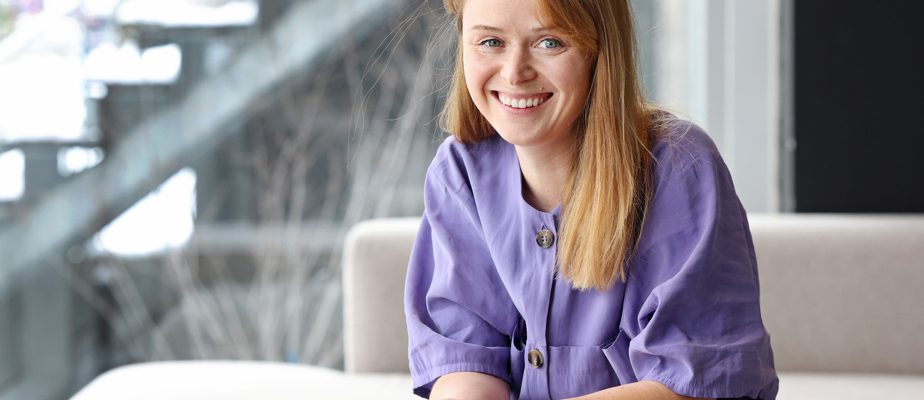JudyGabrielle Lessard’s new play based on the work of Judy Chicago, a pioneer of the second wave of the feminist movement in the United States and a significant figure in contemporary art, will be presented on Tuesday at the Salle Michelle-Rossignol of the Théâtre d’Aujourd’hui.
The show features six characters confronted with inner conflicts who see their certainties crumble upon contact with the work of the feminist artist, known among other things for her famous installation The Dinner Party, which is in the collection of the Brooklyn Museum. The play is carried by a solid cast, including Louise Cardinal, Noémie O’Farrell, Victor Andres Trelles Turgeon and Louise Laprade. The latter plays Judy, still active at 84 years old, who will be the catalyst for the metamorphosis of the protagonists in the second act.

PHOTO GABRIELA CAMPOS, THE NEW YORK TIMES ARCHIVES
Judy Chicago with her sculpture Large Bronze Head with Golden Tonguephotographed in her studio in Belen, New Mexico, in September 2023
“In the 1960s and 1970s, Judy Chicago predicted that nothing was going to change if we did not fundamentally change our relationship with the world,” explains the author, who discovered the visual artist a few years ago while reading her autobiographies. . We are not facing the wall, but within the wall; to a point of no return! Judy has an ecofeminist vision, that is to say the equality of all living beings: humans, animals and plants. Cultural, ethnic, gender diversity, etc. »
Following the shock of his meeting with this “revolutionary artist”, Lessard began this choral piece which exposes “the violence of capitalist consumer society; the discomfort of comfort,” she sums up in a beautiful formula.

PHOTO ROBERT SKINNER, THE PRESS
Gabrielle Lessard: “Judy Chicago predicted that nothing was going to change if we did not fundamentally change our relationship with the world. »
Judy [Chicago] symbolizes resistance to the antagonistic forces of society.
Gabrielle Lessard
While the first act unfolds in anticipation, Judy arrives in the second act. His presence will upset the characters who will literally burst before the transformative force of art. Judy then also presents to us some of her works projected in the theater.
Snubbed by the visual arts community
“Judy Chicago was snubbed by galleries, museums. With her very punchy, very direct dialogues, Gabrielle [Lessard] decided to infuse the artist’s personality into the destiny of the characters in his play. This allows us to be part of a historical trajectory, to rely on the past to build ourselves,” underlined Sylvain Bélanger, the artistic director of the CTD’A, when announcing the productions of his season last May.
Gabrielle Lessard therefore offers a reflection on artistic freedom and cultural identity. “ Judy underlines the importance of art as a force for change and celebrates the capacity of the individual to reinvent themselves and to challenge established social norms,” concludes Lessard before returning to the room, joining designer Cédric Delorme-Bouchard, to finish the lighting intensities of his show.
Judyby Gabrielle Lessard, from January 29 to February 17, at the Michelle-Rossignol room of the CTD’A
Who is Judy Chicago?

PHOTO GABRIELA CAMPOS, THE NEW YORK TIMES ARCHIVES
Judy Chicago
- 1939: Born in Chicago under the name Judy Cohen, into a Jewish intellectual and activist family.
- 1978: she exhibited for the first time The Dinner Party at the San Francisco Museum of Modern Art. His most famous work has been part of a permanent exhibition at the Brooklyn Museum since 2007.
- 2009: in collaboration with Frances Borzello, she published the book Frida Kahlo: Face to Face.
- 2019 and 2020: she exhibits The End: A Meditation on Death and Extinction at the National Museum of Women in the Arts then collaborated with the house of Dior for the spring-summer 2020 collection.
Source: Today’s Theater Center
